If deposition becomes the norm in the field so much information will be unlocked.
20.11.2024 23:44 — 👍 5 🔁 2 💬 0 📌 0Adam Broerman
@adambroerman.bsky.social
Dynamic protein designer @uwproteindesign.bsky.social
@adambroerman.bsky.social
Dynamic protein designer @uwproteindesign.bsky.social
If deposition becomes the norm in the field so much information will be unlocked.
20.11.2024 23:44 — 👍 5 🔁 2 💬 0 📌 0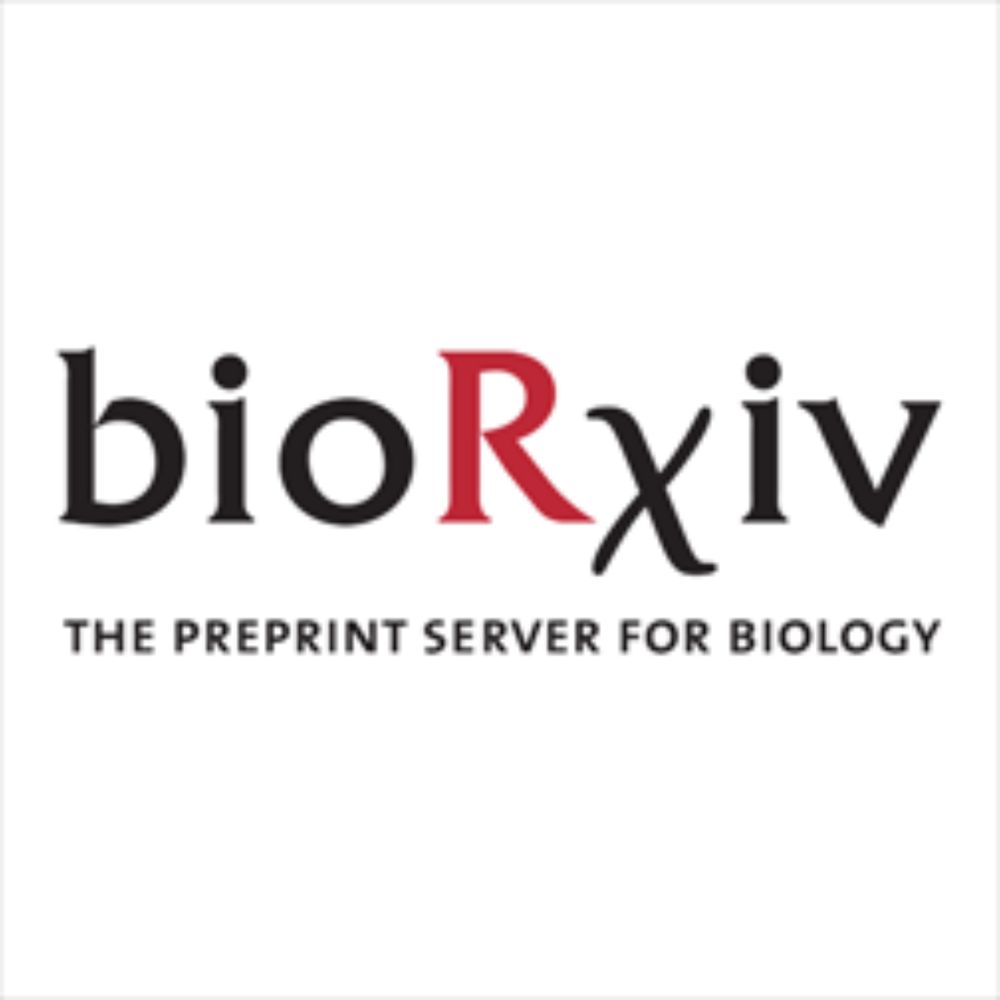
Super excited to share the latest preprint from our lab on macrocycle binder design! Skeetorial (or whatever they are called) to follow soon. Thanks to all the amazing collaborators!
www.biorxiv.org/content/10.1...
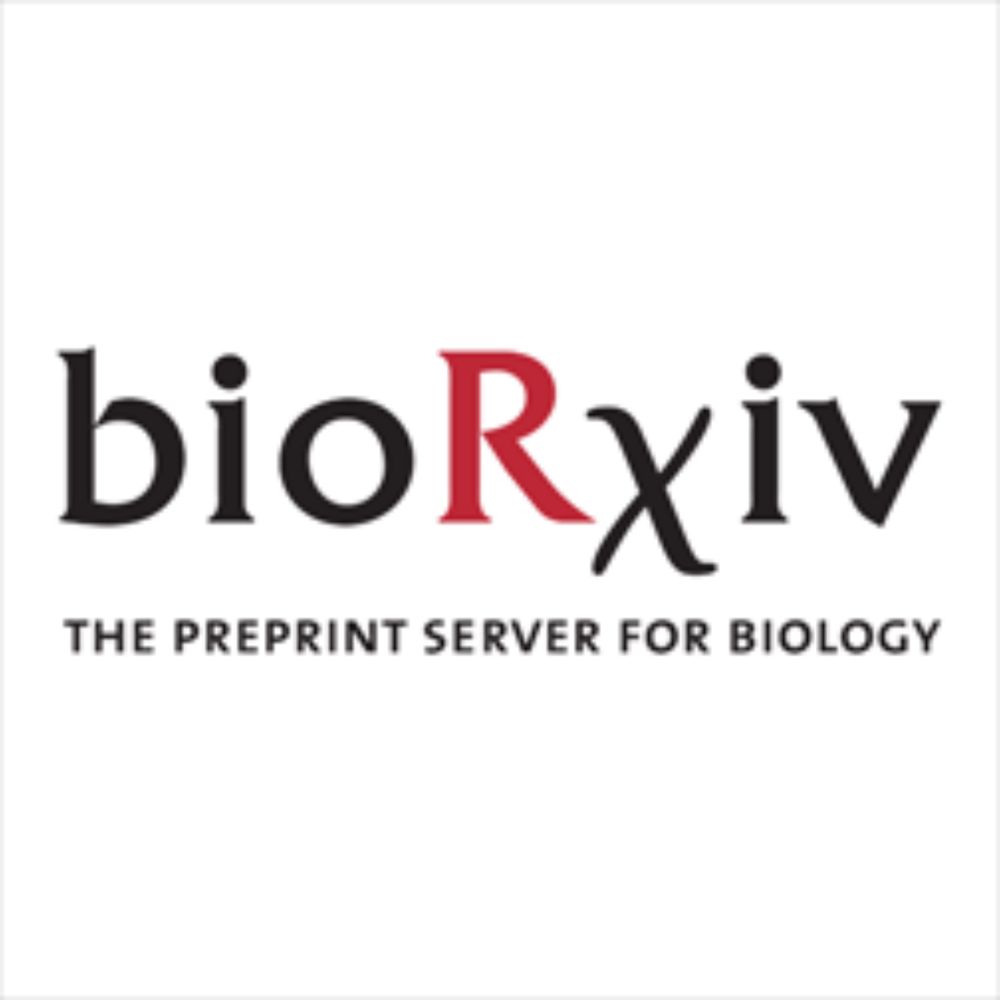
You can read the full preprint here
www.biorxiv.org/content/10.1...

I did forget to link the paper! Here it is
www.biorxiv.org/content/10.1...
The nature paper is previous work designing allosteric cooperativity in symmetric oligomers by Arvind Pillai.
This was a massive collaborative effort with @flopraetorius.bsky.social, @mlichtenstein.bsky.social, Christoph @ Piehler lab, Maxx and Mark @ Stoll lab, Harry @ Zuckerman lab, the IPD cores, and all of @uwproteindesign.bsky.social. Huge thanks to all of you!
20.11.2024 08:26 — 👍 1 🔁 0 💬 1 📌 0Also, if you have ideas for how these switchable cytokines can modulate biological systems in new ways, we would love to discuss/collaborate! We envision these tools could open up a whole new way to explore the biology of transient cytokine signaling.
20.11.2024 08:26 — 👍 3 🔁 1 💬 1 📌 0We suspect that the effector folds upon binding, and that this flexibility is key for rapid conformational transitions against resisting force. If you are interested in collaborating to explore the link between flexibility and force generation in this system, please reach out!
20.11.2024 08:26 — 👍 1 🔁 0 💬 1 📌 0We are really excited to see the new avenues this will open up! If you have ideas that build upon this work and would like to discuss, please reach out. A few we have in mind:
20.11.2024 08:26 — 👍 1 🔁 0 💬 1 📌 0Modulating a previously designed cytokine also demonstrates the generality of our approach: by fusing to our switch, almost any binder can be made to rapidly dissociate from its target.
20.11.2024 08:26 — 👍 1 🔁 0 💬 1 📌 0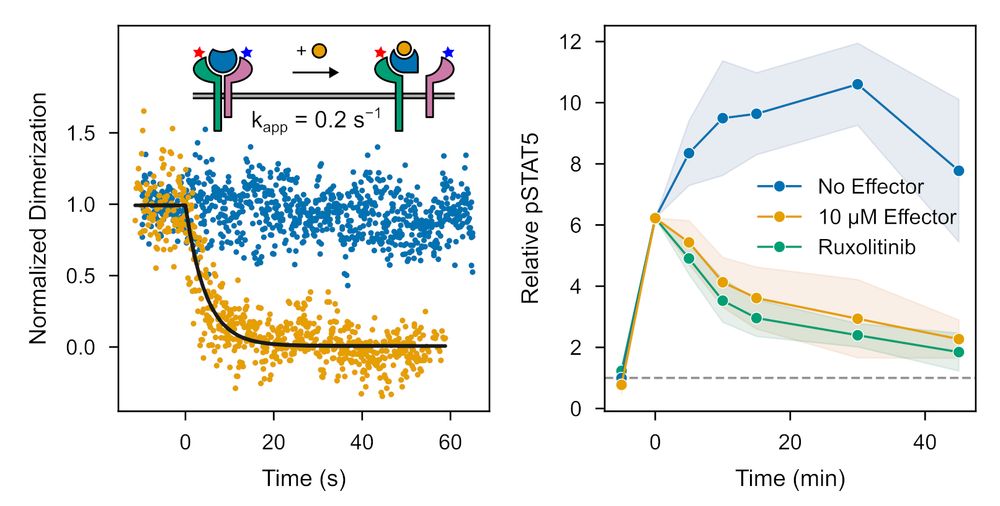
Christoph in Jacob Piehler's lab showed that with this switchable cytokine, adding the effector completely reverses receptor dimerization on the cell surface within 10 seconds and immediately blocks accumulation of phosphoSTAT5.
20.11.2024 08:26 — 👍 1 🔁 0 💬 1 📌 0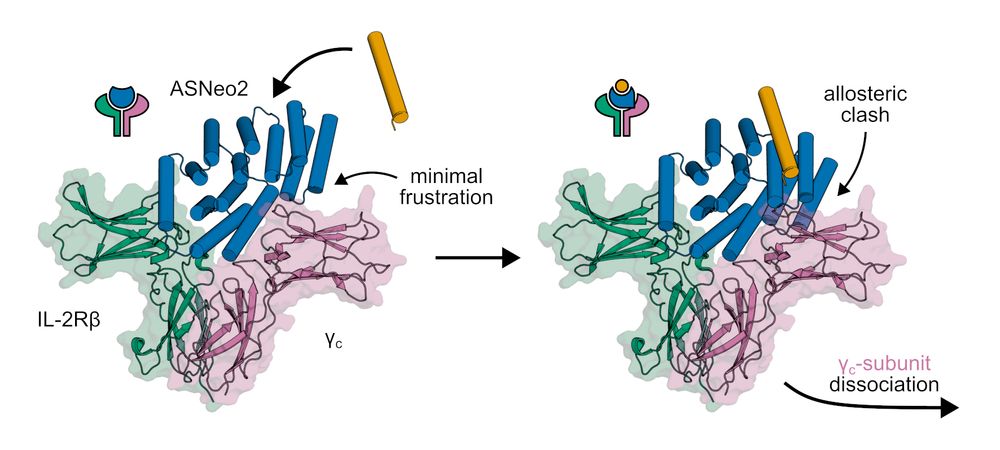
Finally, the residence time of cytokines stimulating their receptors modulates the downstream response, but native pathways for signal termination are slow, so the duration of signaling is difficult to control. We constructed cytokines which can be disengaged from their receptors far faster.
20.11.2024 08:26 — 👍 1 🔁 0 💬 1 📌 0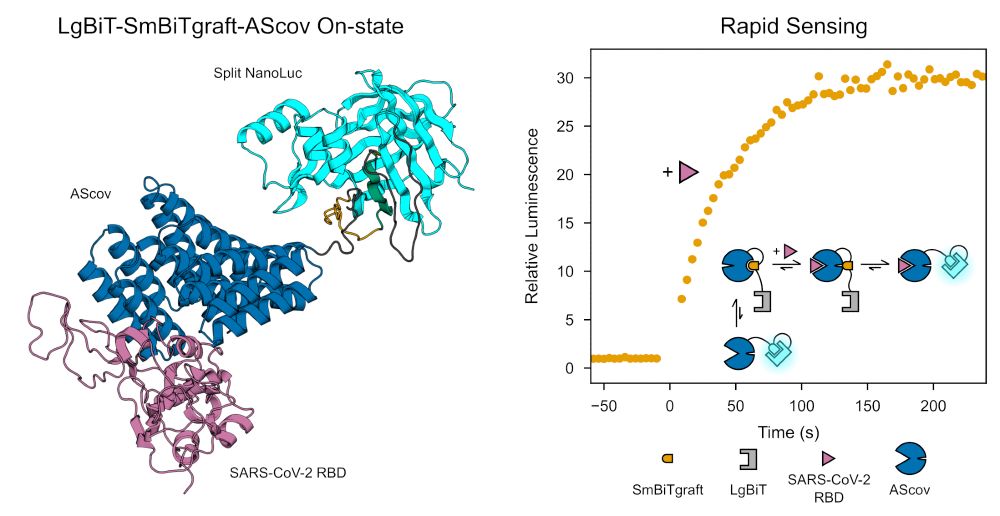
@mlichtenstein.bsky.social and I also used facilitated dissociation to make biosensors which are just as modular as those built previously with our LOCKR platform, but which respond 70 times faster.
20.11.2024 08:26 — 👍 5 🔁 1 💬 1 📌 0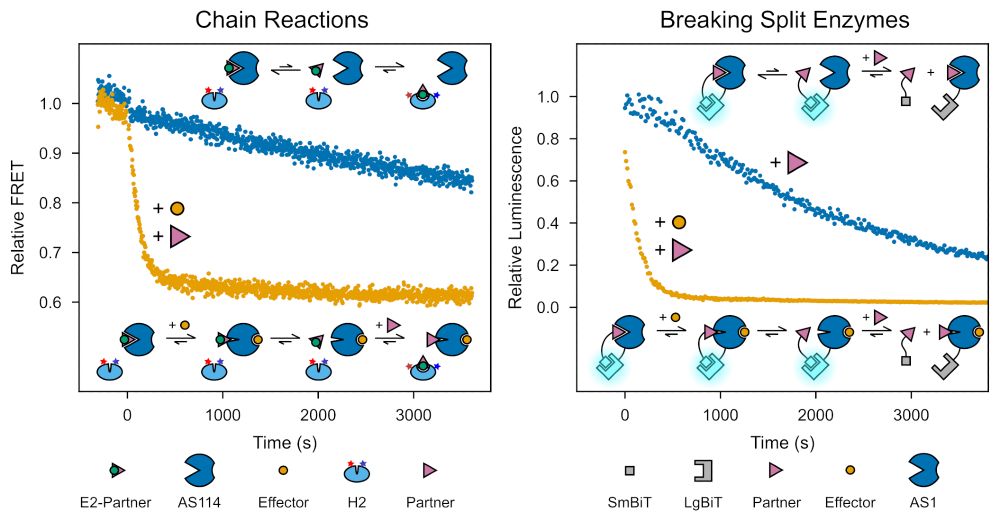
This facilitated dissociation behavior can be used to rapidly switch split enzymes and to rapidly release kinetic traps in chain reactions, which would be potentially useful for constructing kinetically governed protein circuits.
20.11.2024 08:26 — 👍 1 🔁 0 💬 1 📌 0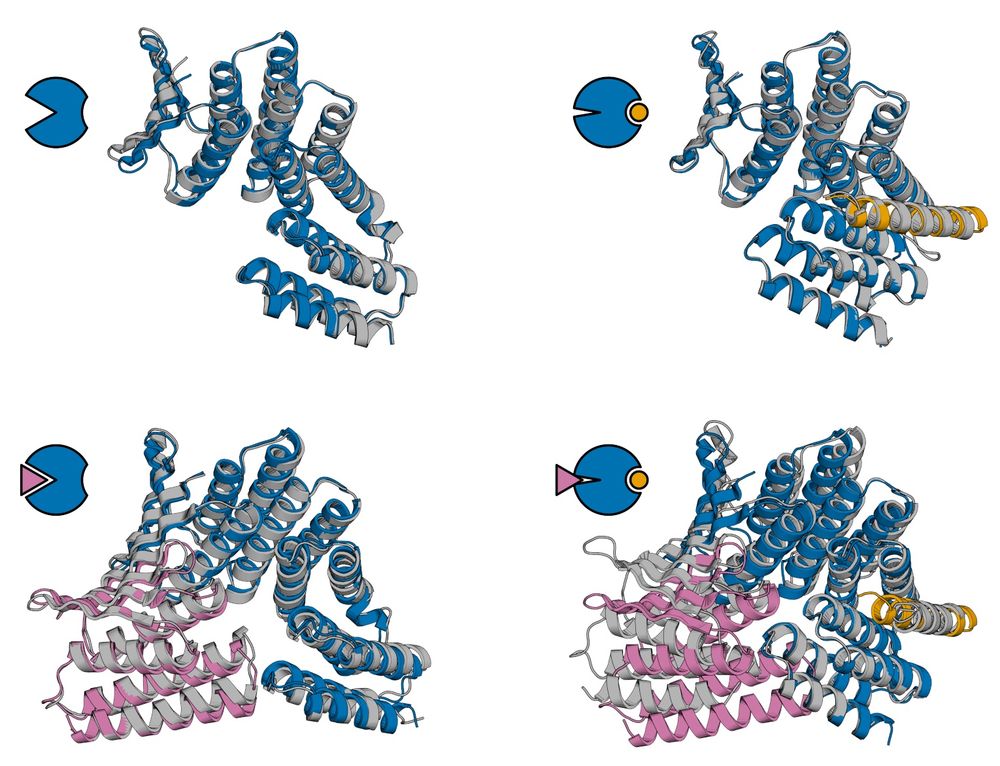
We solved crystal structures of all major equilibrium states of one design, confirming accurate design of these complex multistate proteins. The structure of the strained ternary state(!) shows how the entire complex strains to resolve the designed structural clash.
20.11.2024 08:26 — 👍 1 🔁 0 💬 1 📌 0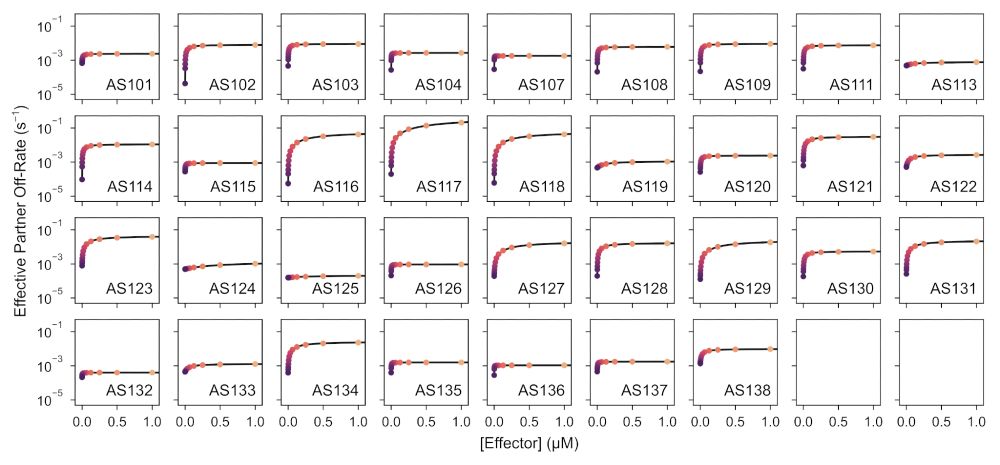
By designing the magnitude and direction of the induced strain, we could control the partner dissociation kinetics over a wide range. Notably, simple geometric calculations on the AlphaFold predictions of the strained states predicted the dissociation kinetics with an R² of 0.6.
20.11.2024 08:26 — 👍 1 🔁 0 💬 1 📌 0
With the partner bound, we measured the base rate of conformational switching and found that the rates of effector binding and subsequent partner dissociation surpass this, confirming an induced-fit mechanism for effector association.
20.11.2024 08:26 — 👍 1 🔁 0 💬 1 📌 0Most efficiently accessing this strained state requires that the conformational switch exerts force in a power stroke. To obtain this behavior, we used a flexible effector and designed an open cleft in the unstrained state where the effector can bind to initiate the switch.
20.11.2024 08:26 — 👍 1 🔁 0 💬 1 📌 0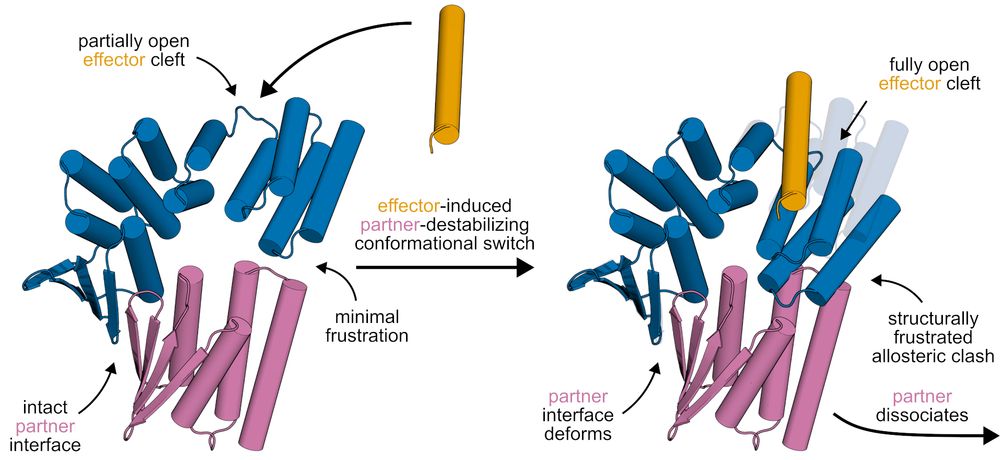
We designed an effector-responsive conformational switch which can be attached to almost any binder to sterically modulate binding its partner. Binding the effector induces a strained intermediate state from which partner dissociation is accelerated by up to thousands-fold.
20.11.2024 08:26 — 👍 2 🔁 0 💬 1 📌 0
Protein interaction kinetics often affect the dynamic behavior of biological systems. While high affinity interactions are useful, they usually exchange slowly due to their low off-rates. We developed a general strategy for inducing rapid exchange of high affinity interactions.
20.11.2024 08:26 — 👍 2 🔁 0 💬 1 📌 0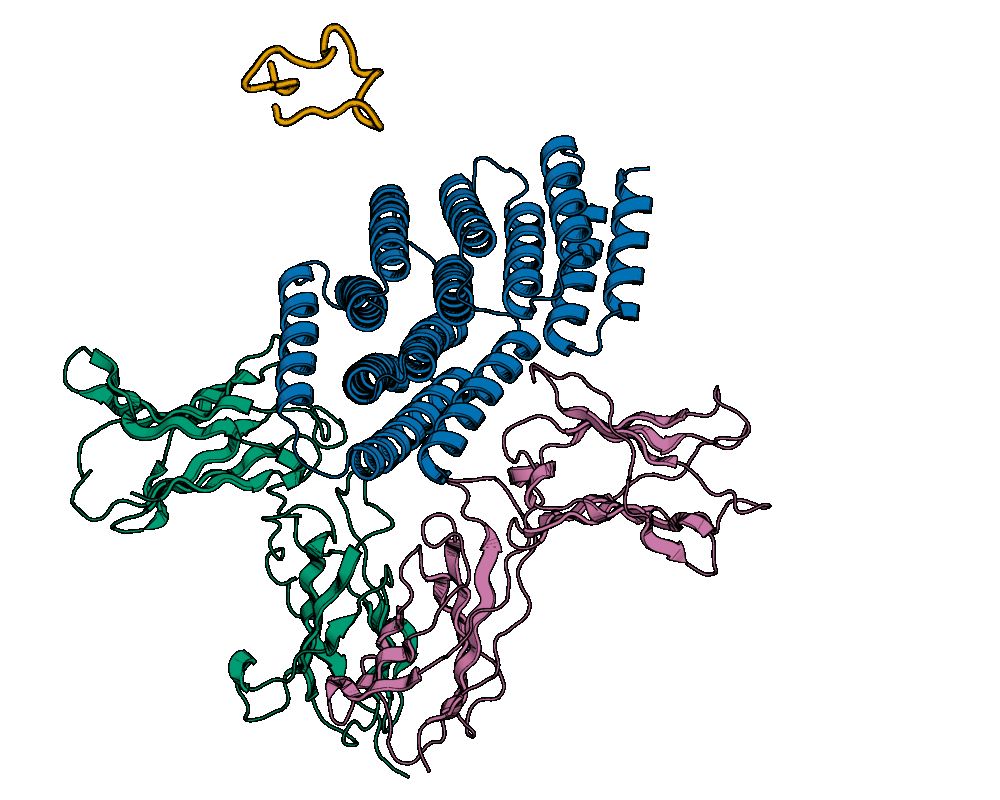
Excited to join here and announce our new #proteindesign strategy for allosterically controlling the kinetics of protein-protein interactions! Read on for cool applications in cytokine signaling, biosensing, and protein circuits.
20.11.2024 08:26 — 👍 30 🔁 11 💬 2 📌 1